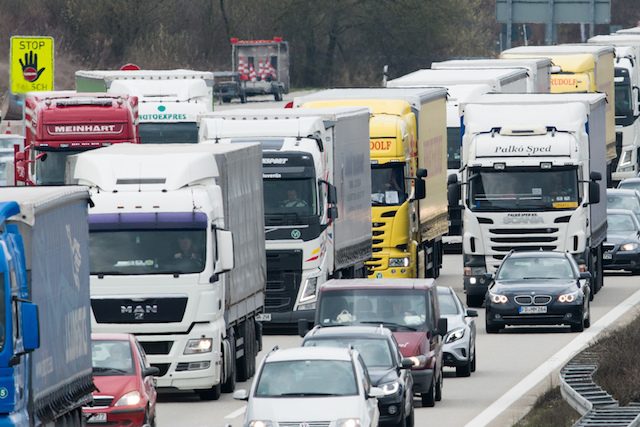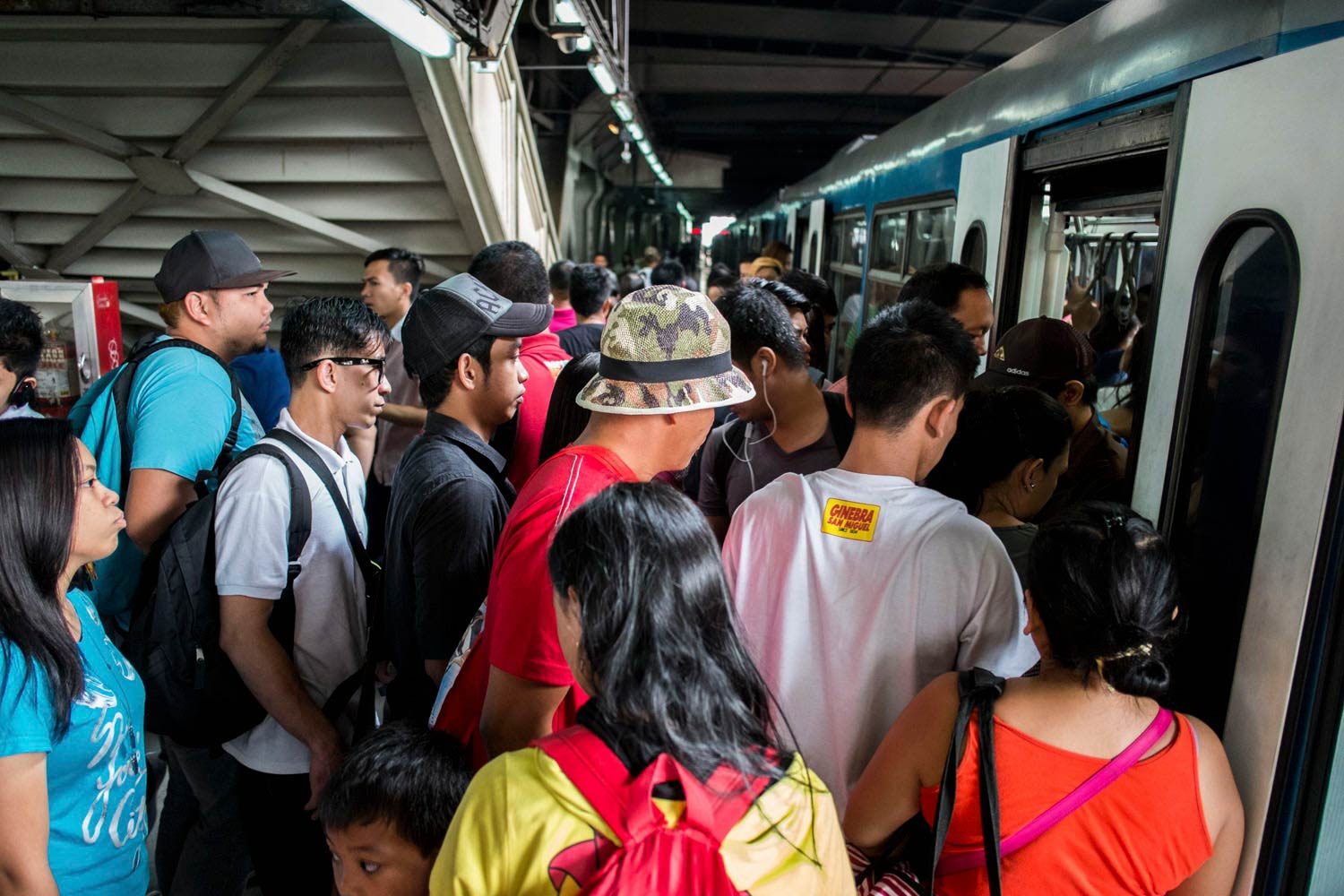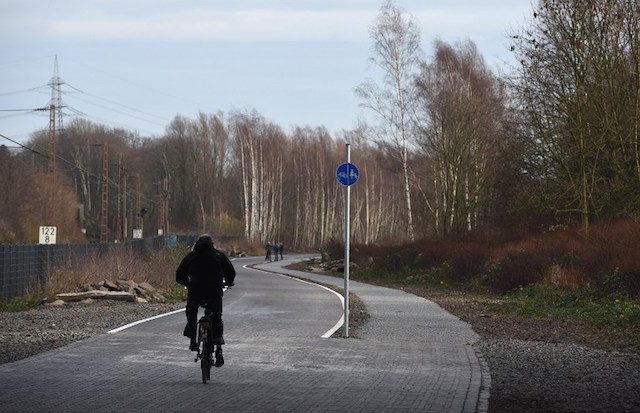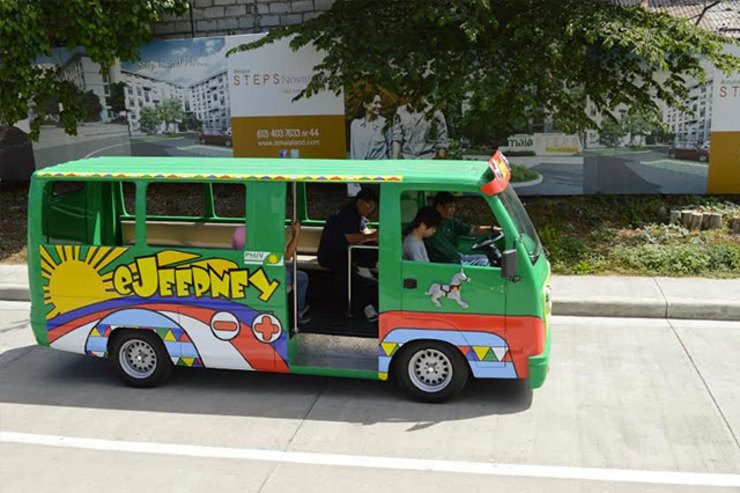SUMMARY
This is AI generated summarization, which may have errors. For context, always refer to the full article.

(Part 2 of 2)
Read Part 1 here.
MANILA, Philippines – Metro Manila is very car-centric, and it’s a problem aggravated by the increasing number of vehicles available on the market and on the road.
To reduce automobile use and move toward a more environmentally-friendly transport option, the Philippines can look at several transportation solutions being implemented in one European country famous for its love affair with cars: Germany.
While Germany is home to luxury, high-end auto manufacturers and is famed for its autobahn, the country’s 80 million citizens also do much of their travel by mass transit. According to a study by researchers Ralph Buehler and John Pucher, Germans are even 5 times as likely to take public transport than Americans – this, despite also having high levels of vehicle ownership, similar to the United States.
The Philippines is an archipelagic country with a population of around 100 million. Yet its densely populated urban centers are sorely lacking in sufficient transportation infrastructure to allow citizens to move around efficiently.
To untangle its transportation problem, the Philippines can learn from Germany’s successful attempts in bringing down car use, increasing mass transit ridership, and promoting non-motorized transport to create a sustainable, environmentally-friendly transport network.
Making mass transit attractive
More Germans take public transportation because of several reasons: it’s fast, efficient, economical, and much cheaper than having a car. As early as the 1970s, Germany began imposing restrictions on car use and ownership, making it more costly to buy, drive, and even park a car. Potential car owners faced higher fees and taxes; in the late 1990s, the German government passed the Ecological Tax Reform Act, which gradually hiked up tax rates on oil and gas.
Car owners also have to deal with fewer parking spaces, lower speed limits in city centers, and areas that made it more inconvenient to move around by car, such as roads with dead ends, one-way streets, and car-free zones.
But to complement this move, car owners had an attractive alternative: an extensive, efficient, fast, and reliable public transportation network. The mass transit system in Germany allows for easy transfers between buses and trains, with regional transit organizations managing these transfers to cut down on wait time. Passengers can also use just one ticket inside a particular metropolitan areas regardless of the mode of transportation. In some cities, tickets are cheaper if bought on a weekly, monthly, or yearly basis – another incentive for the public to take mass transit daily.
In the Philippines, experts and even the country’s own transportation agency have pointed out that car users can only be persuaded to shift to public transport if it proves to be more efficient and convenient than using private vehicles.
But Metro Manila’s public transport system still leaves much to be desired. Commuters can go around by buses or jeeps, which often have terminals in malls and other major urban centers. But transfers are not seamless and the rides don’t have fixed schedules; travel time is dependent on the traffic situation, and most jeeps or buses often stop and stall to wait for more passengers until the vehicles are full.
It’s easier to transfer on the metro’s 3 train lines, which now use only one smart card for payment. The problem is how unreliable they are: one line, the Metro Rail Transit 3, is especially notorious for suffering glitch after glitch.

A 2009 Metropolitan Policy Program study said that the German public transportation system is so successful that it generates enough revenue to cover its expenses because of the volume of passengers that take mass transit.
“Public transportation is more successful in Germany not because of more subsidies, but due to much better fare and service policies, integrated systems of public transportation, and higher cost of car use,” the study said.
Contrast that with Metro Manila’s 3 train lines, which also face a high volume of passengers daily but with fares heavily subsidized by the state. The government has repeatedly argued that raising fares would mean better services, but public opinion on this has largely been negative, partly because fares were raised in January 2015, yet services continued to suffer and even worsen.
The Philippines can learn from Germany by investing heavily in creating a more extensive and seamless transport system that car owners can readily patronize. In Germany, public transportation was made more economical because of the cities’ high population density. The situation is similar to Manila – public transportation can also be economical here because of the capital region’s 15 million daytime population – but a lack of coordination in transport systems is putting off car users from making the switch.
Germany’s bike highway
Aside from its extensive and reliable mass transit system, many Germans take public transportation because land use planning and the promotion of walking and cycling have made it easy to reach bus stops and train stations.
According to Buehler and Pucher, Germany’s land use policies are integrated with transport planning, keeping distances short enough to be reachable by walking or cycling. Bicycle-parking facilities are also available at train stations, and cyclists are allowed to take their bikes onboard trains.
To further cut down on motorized vehicle use, Germany has only recently opened the first 5 kilometers of its environmentally-friendly version of the autobahn: a 100-km dedicated bicycle highway.
The network, which will run on disused railroad tracks, will connect 10 cities and 4 universities in the industrial region of Ruhr Valley. The initial 5 kilometers of the network was opened in December 2015.

Unlike the bike paths in several German cities – which are narrow and can abruptly lead to a dead end or a bus lane – the new bike routes will be 4 meters wide and will feature lanes for overtaking. It will also have overpasses and underpasses to allow cyclists to pass across busy intersections without crossing into motorized vehicle traffic.
Martin Toennes of regional development group RVR said in an Agence France-Presse report that the bike network can replace 50,000 motor vehicles during commute hours. The route can also stand to serve the 2 million people living within 2 kilometers of the bike highway.
Other German cities are following suit: Frankfurt is planning its 30 km path to Darmstadt, while Munich is planning a 15-km route to the northern suburbs; Nuremberg and Berlin, meanwhile, are doing feasibility studies of their own.
Zooming in: The case of Freiburg
So what does a sustainable transport program actually look like when implemented in a city? One German city that has been frequently cited as a prime example of this is Freiburg, a city in southwest Germany’s Black Forest.
Since the late 1960s, Freiburg has been implementing various solutions that eventually led to less cars on the roads, more bikes, and more mass transit users.
In the mid-1980s, it became the first German city to ban cars in its city center. Its policy restricting automobile use eventually expanded to car-free zones, traffic-calmed neighborhoods, and imposing fees for parking.
Freiburg’s land use plan of 1981 also laid out the foundation for integrating land-use planning and transportation planning, mandating that new development should be set up and concentrated along corridors that are reached by public transportation.
To complement its increasing slant toward car-free roads and a city that’s easily navigable by public transport, Freiburg also expanded its bicycle infrastructure. For instance, businesses, schools, and apartments were required to provide parking for bicycles.
With less private vehicles on the road, citizens rely on public transport services that the city worked to expand and coordinate. In 1984, Freiburg introduced Germany’s first monthly ticket, which was later expanded to allow passengers to use just one ticket to get around the region using buses, tram, and trains.
Getting public support
Implementing radical changes to stop a car-centric urban sprawl can’t be done overnight. It will need public support and political will to push through with potentially unpopular measures.
Germany’s sustainable transport solutions developed over several decades, gradually introducing new policies and expanding existing ones. Public and political support was needed to implement small-scale experiments in a few cities until they were eventually adopted in other areas.
To ease into the transition process, transport experts suggest conducting pilot experiments on non-controversial policies. If successful, citizens themselves will clamor for the continuation, or even expansion, of these programs.
For instance, many neighborhoods in German cities and villages have implemented traffic-calming strategies – a system designed to reduce motor vehicle use and improve safety by adding speed humps, creating dead-end roads and car-free zones, and limiting car speeds. But the clamor for traffic calming also came from the public, after citizens saw how it could improve their quality of life and ensure safety for residents.
This is the same principle that guides environmental advocates who are pushing for reforms in the Philippine transport system. In recent months, the transportation department has been testing and promoting non-stop buses to get car users to switch to travel by bus – an idea that the government believes will free up more road space and speed up travel time for everyone.
Advocates pushing for a more livable city also want more pedestrian- and bike-friendly streets, hence the call for road-sharing experiments. While public opinion is split on this – in Cebu City, one such experiment intensified traffic for a day – the proponents of these activities believe that the pilot experiments can be further refined until the concept becomes publicly accepted.
Some policies, however beneficial, won’t escape controversy. Germany’s environmental tax reform was unpopular, hiking gas prices incrementally from 1999 to 2003. But this phased implementation was adopted instead of a one-time gas price hike that was sure to elicit extreme public backlash.
Policymakers also need to take up an effective public information campaign that explains the goals of the policies they are trying to implement, and rationalize how the immediate costs will be translated into benefits in the long run.

Looking forward: Investing in e-vehicles
Aside from investing in better mass transit and firming up land use and transportation plans, both the Philippines and Germany can also study the potential benefit of the electric vehicle (e-vehicle) industry to further reduce transport emissions.
Germany, Europe’s largest economy, has already made significant strides in this area. In 2014, it was named the most energy efficient major economy; in 2010, its federal government adopted a new Energy Concept document that mapped out the framework for the country’s energy policy until 2050.
The goal is to cut down greenhouse gas emissions by 40% by 2020, and at least 80% by 2050. Germany also wants renewable energy to take center stage and account for 18% of final energy consumption in 2020.
By doing this, government officials aim to turn Germany into one of the “most energy efficient and greenest economies in the world, while enjoying competitive energy prices and a high level of prosperity.”
Since Germany introduced its energy tax reform – levying higher fees for gas users – fossil fuel consumption has gone down. Another positive side effect is encouraging the development of energy-efficient technology, a direction that the Philippines has also started to take.
E-vehicles are being actively promoted as cleaner, more sustainable alternatives to the traditional gas-guzzling models, and Germany – Europe’s biggest car market, and home to big-name auto manufacturers – is trying to drum up interest in this market.
The country hopes to have 1 million battery-powered cars out on the streets by 2020, but this ambitious target is facing a challenge: automakers say they need incentives and government subsidies to entice consumers to buy the greener cars, but there has been resistance to using taxpayer money to boost a sluggish electric car market.
The same challenge of getting enough government support and subsidies is evident in the Philippine electric vehicle market. Electric jeeps have been plying the “green route” in the financial district of Makati since 2007, and more forms of electric vehicles have been introduced since then, such as the e-tricycle and the e-bike.
The Electric Vehicle Association of the Philippines (EVAP) is currently working on a roadmap to guide the development of the e-vehicle industry in the country. The government’s energy department is also working with the Asian Development Bank to replace 200,000 tricycles all over the country with environmentally-friendly electric versions.
The Philippines aims to be the ASEAN region’s hub for e-vehicle production by 2020. The sector is eyeing a million e-vehicles by that year: a combination of e-bicycles, e-motorcycles, e-tricycles, and e-jeepneys.
But to achieve this goal, EVAP said it needs government support in the form of legislation that would make it financially viable to manufacture e-vehicles and import the necessary components at a more affordable price through reduced tariff rates.
Germany’s transportation solutions
- Start with non-controversial policies and small-scale experiments that citizens can support and clamor for. Other cities will eventually adopt the same.
- Integrate land-use planning and transportation planning. Citizens should be able to go anywhere within a city by taking public transportation, and biking or walking the last couple of meters. Designating car-free zones can also be studied.
- Integrate modes of public transportation. Citizens should be able to switch from train to bus easily through integrated infrastructure (bus stops and train stations within walking or cycling distance), payment systems (one ticket for use throughout the city), and with a degree of convenience and predictability (live updates of timetable and routes).
- Promote walking and cycling by setting up bike lanes and walkways.
- Mount an effective public information campaign that tells citizens what benefits they can expect in the short-, medium-, and long-term.
– Rappler.com
The research for this report was supported by the Friedrich Naumann Foundation for Freedom.

Add a comment
How does this make you feel?
There are no comments yet. Add your comment to start the conversation.